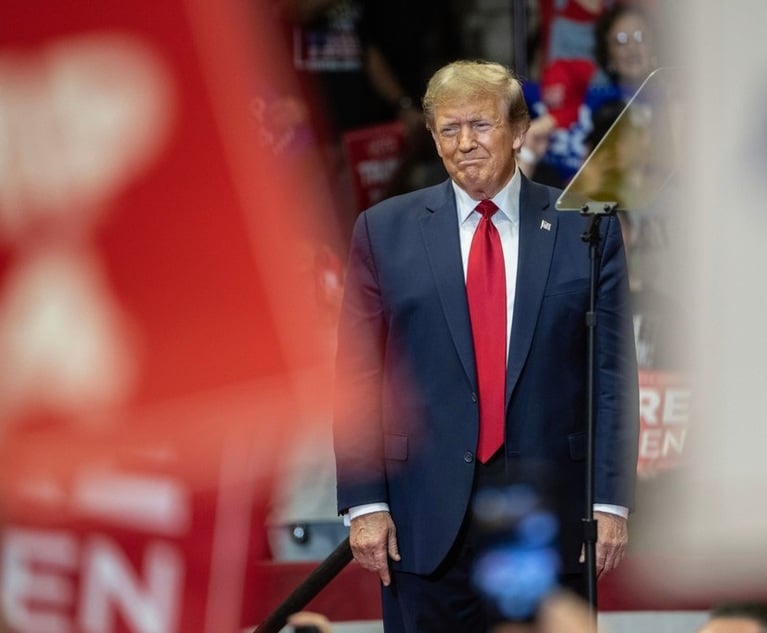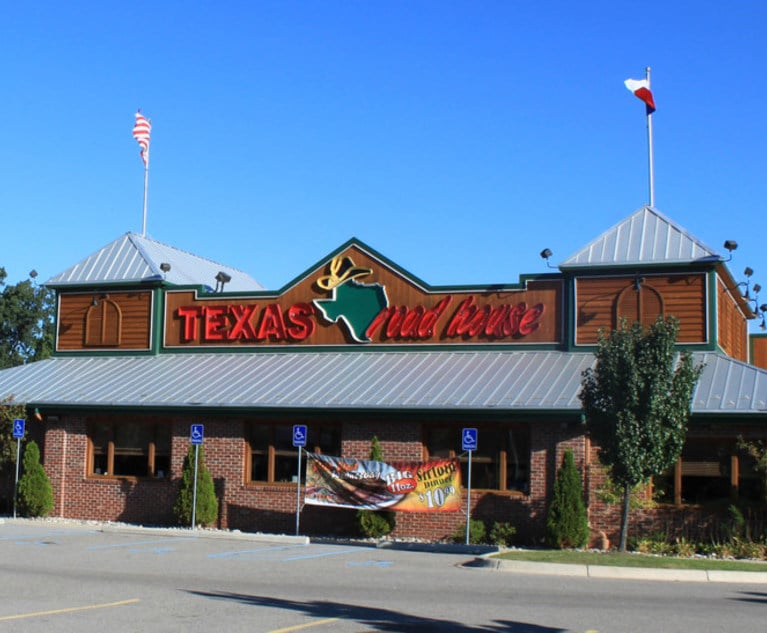Wal-Mart may have covered up bribery in Mexico
Its bad enough that Wal-Mart de Mexico allegedly engaged in criminal activity to expedite its expansion throughout the country south of the border by paying bribes to Mexican officials, but when those allegations came to light at its parent company, Wal-Mart, the worlds largest retailer, swept it under the rug.
April 24, 2012 at 05:30 AM
10 minute read
The original version of this story was published on Law.com
It's bad enough that Wal-Mart de Mexico allegedly engaged in criminal activity to expedite its expansion throughout the country south of the border by paying bribes to Mexican officials, but when those allegations came to light at its parent company, Wal-Mart, the world's largest retailer, swept it under the rug. At least, that's what a New York Times article published over the weekend claims.
According to the article, “Vast Mexico Bribery Case Hushed Up by Wal-Mart After Top-Level Struggle,” a senior lawyer at Wal-Mart received an email in 2005 from a former Wal-Mart de Mexico executive, claiming the company engaged in rampant Foreign Corrupt Practices Act (FCPA) violations in an effort to win market dominance. The investigation, which immediately followed the allegations, uncovered a long trail of potentially illegal payments totaling more than $24 million.
Although the recommended next step by the lead investigator was naturally to broaden the investigation, Wal-Mart slammed on the brakes. According to the article, the company didn't notify American or Mexican law enforcement officials, it didn't reprimand any of the executives involved in the potentially illegal activity, and it went on to promote one executive who was named as the driving force behind the corruption to vice chair several years later. In fact, the New York Times story was the first time any of this information was made public.
“Under fire from labor critics, worried about press leaks and facing a sagging stock price, Wal-Mart's leaders recognized that the allegations could have devastating consequences, documents and interviews show,” the article explained. “Wal-Mart de Mexico was the company's brightest success story, pitched to investors as a model for future growth. (Today, one in five Wal-Mart stores is in Mexico.) Confronted with evidence of corruption in Mexico, top Wal-Mart executives focused more on damage control than on rooting out wrongdoing.”
The New York Times article, which is almost 8,000 words long, goes on to describe in detail the series of events that followed.
It's bad enough that
According to the article, “Vast Mexico Bribery Case Hushed Up by
Although the recommended next step by the lead investigator was naturally to broaden the investigation,
“Under fire from labor critics, worried about press leaks and facing a sagging stock price,
The
This content has been archived. It is available through our partners, LexisNexis® and Bloomberg Law.
To view this content, please continue to their sites.
Not a Lexis Subscriber?
Subscribe Now
Not a Bloomberg Law Subscriber?
Subscribe Now
NOT FOR REPRINT
© 2025 ALM Global, LLC, All Rights Reserved. Request academic re-use from www.copyright.com. All other uses, submit a request to [email protected]. For more information visit Asset & Logo Licensing.
You Might Like
View All
GCs Must Act Now to Prepare for the Trump Administration’s First Months
8 minute read
'Erroneous Assumption'?: Apple Challenges DOJ Antitrust Remedy in Google Search Monopoly Case
3 minute read
Riding High, Texas Roadhouse Gives Legal Chief 3-year Contract Extension,15% Salary Boost
2 minute readTrending Stories
- 1'Erroneous Assumption'?: Apple Challenges DOJ Antitrust Remedy in Google Search Monopoly Case
- 2A Jury to Determine Whether Stairs Were Defectively Designed in Injury Case, State Appellate Court Rules
- 3Baker & Hostetler Names 24 New Partners
- 4Test
- 5Am Law 200 Firm Steps In to Defend Boston Transportation Company in Trademark Dispute
Who Got The Work
Michael G. Bongiorno, Andrew Scott Dulberg and Elizabeth E. Driscoll from Wilmer Cutler Pickering Hale and Dorr have stepped in to represent Symbotic Inc., an A.I.-enabled technology platform that focuses on increasing supply chain efficiency, and other defendants in a pending shareholder derivative lawsuit. The case, filed Oct. 2 in Massachusetts District Court by the Brown Law Firm on behalf of Stephen Austen, accuses certain officers and directors of misleading investors in regard to Symbotic's potential for margin growth by failing to disclose that the company was not equipped to timely deploy its systems or manage expenses through project delays. The case, assigned to U.S. District Judge Nathaniel M. Gorton, is 1:24-cv-12522, Austen v. Cohen et al.
Who Got The Work
Edmund Polubinski and Marie Killmond of Davis Polk & Wardwell have entered appearances for data platform software development company MongoDB and other defendants in a pending shareholder derivative lawsuit. The action, filed Oct. 7 in New York Southern District Court by the Brown Law Firm, accuses the company's directors and/or officers of falsely expressing confidence in the company’s restructuring of its sales incentive plan and downplaying the severity of decreases in its upfront commitments. The case is 1:24-cv-07594, Roy v. Ittycheria et al.
Who Got The Work
Amy O. Bruchs and Kurt F. Ellison of Michael Best & Friedrich have entered appearances for Epic Systems Corp. in a pending employment discrimination lawsuit. The suit was filed Sept. 7 in Wisconsin Western District Court by Levine Eisberner LLC and Siri & Glimstad on behalf of a project manager who claims that he was wrongfully terminated after applying for a religious exemption to the defendant's COVID-19 vaccine mandate. The case, assigned to U.S. Magistrate Judge Anita Marie Boor, is 3:24-cv-00630, Secker, Nathan v. Epic Systems Corporation.
Who Got The Work
David X. Sullivan, Thomas J. Finn and Gregory A. Hall from McCarter & English have entered appearances for Sunrun Installation Services in a pending civil rights lawsuit. The complaint was filed Sept. 4 in Connecticut District Court by attorney Robert M. Berke on behalf of former employee George Edward Steins, who was arrested and charged with employing an unregistered home improvement salesperson. The complaint alleges that had Sunrun informed the Connecticut Department of Consumer Protection that the plaintiff's employment had ended in 2017 and that he no longer held Sunrun's home improvement contractor license, he would not have been hit with charges, which were dismissed in May 2024. The case, assigned to U.S. District Judge Jeffrey A. Meyer, is 3:24-cv-01423, Steins v. Sunrun, Inc. et al.
Who Got The Work
Greenberg Traurig shareholder Joshua L. Raskin has entered an appearance for boohoo.com UK Ltd. in a pending patent infringement lawsuit. The suit, filed Sept. 3 in Texas Eastern District Court by Rozier Hardt McDonough on behalf of Alto Dynamics, asserts five patents related to an online shopping platform. The case, assigned to U.S. District Judge Rodney Gilstrap, is 2:24-cv-00719, Alto Dynamics, LLC v. boohoo.com UK Limited.
Featured Firms
Law Offices of Gary Martin Hays & Associates, P.C.
(470) 294-1674
Law Offices of Mark E. Salomone
(857) 444-6468
Smith & Hassler
(713) 739-1250







